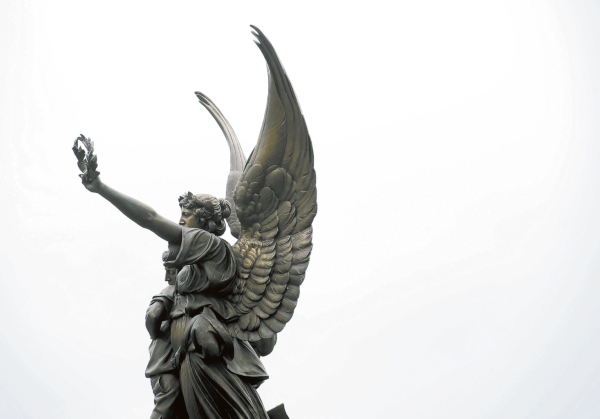My turn, James Carli: Time for ‘Fame’ to be relegated to museum
Published 12:00 am Thursday, June 13, 2019

- The Confederate Memorial statue of 'Fame,' depicting a winged figure holding a fallen soldier, was dedicated in 1909 by the Hoke Chapter of the United Daughters of the Confederacy. Jon C. Lakey, Salisbury Post.
By James Carli
Amid the recent national conversation on the role and proper context of Confederate memorials, Salisbury’s “Fame” statue has once again become a point of contention in my hometown.
I have heard many arguments in support of leaving the statute in its place, such as that it supposedly was built to commemorate soldiers from both sides of the Civil War, or that it is built to honor the war fallen from all wars.
Some people have argued that “the Civil War is history” and so we should just ignore complaints that some of our neighbors have about the statue. But I believe that these arguments are, at best, underinformed and, at worst, disingenuous attempts to obfuscate latent racism.
The statue, commissioned by the United Daughters of the Confederacy arrived in Salisbury in 1905 during the first wave of Confederate statues erected across the South as a means of visually reinforcing Jim Crow laws being passed to disenfranchise and further subjugate black Americans. To this day, the statue’s pedestal is inscribed, “In memory of Rowan’s Confederate soldiers, that their heroic deeds, sublime self-sacrifice, and undying devotion to duty and country may never be forgotten, 1861-1865.”
According to many Southern states’ secession speeches, “the prohibition of slavery in the territories is the cardinal principle” of states’ desires to secede from the American union. Southern states explicitly said they were seceding because the Union’s anti-slavery would damage their economy. The Confederacy was explicitly formed on the basis of perpetuating the legalized superiority of less-melanated people over their more-melanated neighbors.
It is an outright lie and intellectually dishonest to claim that the Civil War was fought for reasons other than the right of people to live as free humans and not the property of other people. And the “Fame” statue in Salisbury was explicitly built to commemorate the soldiers who died in defense of this explicit oppression, as its pedestal reads to this day.
Americans have witnessed and celebrated as oppressed people in other countries valiantly stood up and took action against symbols of their oppression.
How many people in Rowan County cheered when Iraqis celebrated the toppling of the Saddam statue in 2003? How many Americans watched with joy as liberated east Germans crushed the Berlin Wall in 1991?
It seems pretty clear to me that black and brown people who deface the “Fame” statue are driven by the same universal impulse of resistance against oppression as Kurds who deface Ba’athist statues in Iraq or Syrians who deface statues of Bashar al-Assad in Syria.
“Fame” is a monument to white supremacy, institutionalized racism and systemic oppression based on nothing more than skin melanation.
People who claim that “the Civil War is history” are correct — the Civil War and the monuments built to honor its racist losers and perpetuate white supremacy are daily reminders of the dark history in America of racism and subjugation of our fellow countrymen.
And our Black neighbors have been forced to walk and drive past this reminder every day. Can you imagine how angry that must make them?
It’s time for “Fame” to be relegated to the dustbin of history, and relocated to a civil rights museum where its full context can be told, so that future generations can understand its history as a physical reminder of racism and oppression that many people in Salisbury and Rowan have been proud to celebrate, even in 2019.
And let’s consider replacing it with a monument to our better ideals, perhaps a statue of Abraham Lincoln or any of the patriotic black Civil War intelligence operatives who conveyed the black dispatches to the Union soldiers fighting for their liberty?
James Carli is a fourth-generation Salisburian, born and raised. He was vice president of the Salisbury High School student government in 2005, formerly worked to end the war on drugs with the Drug Policy Alliance and currently works for an international humanitarian nonprofit in New York.

